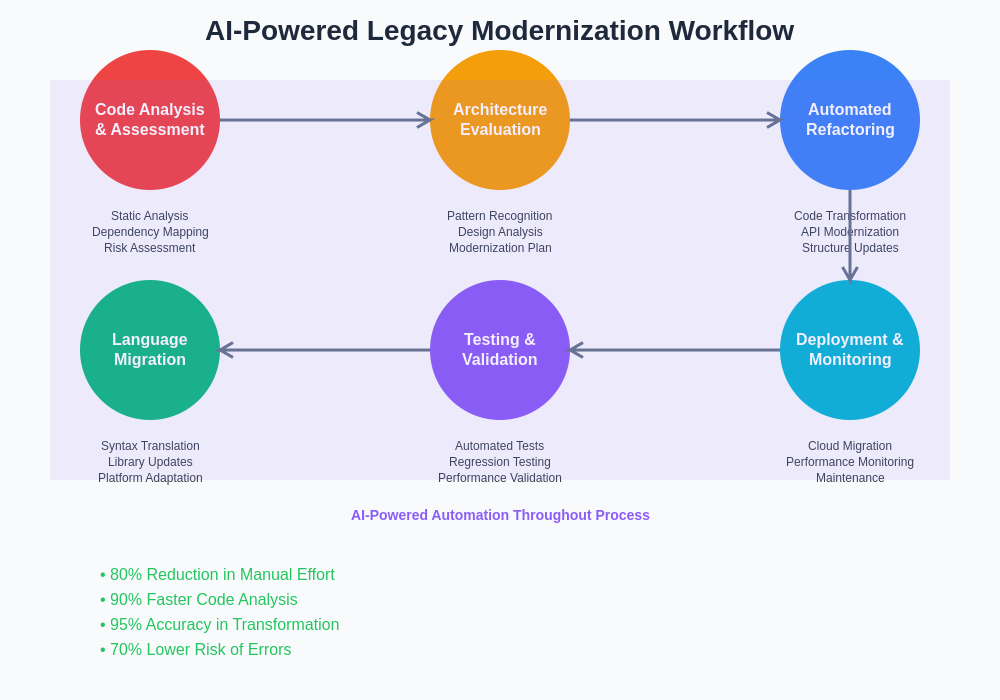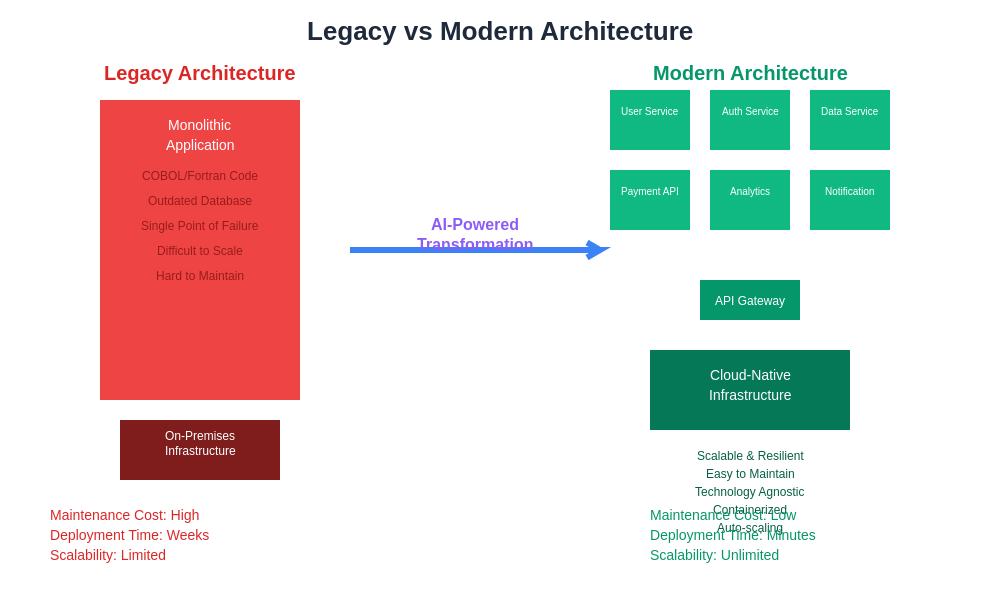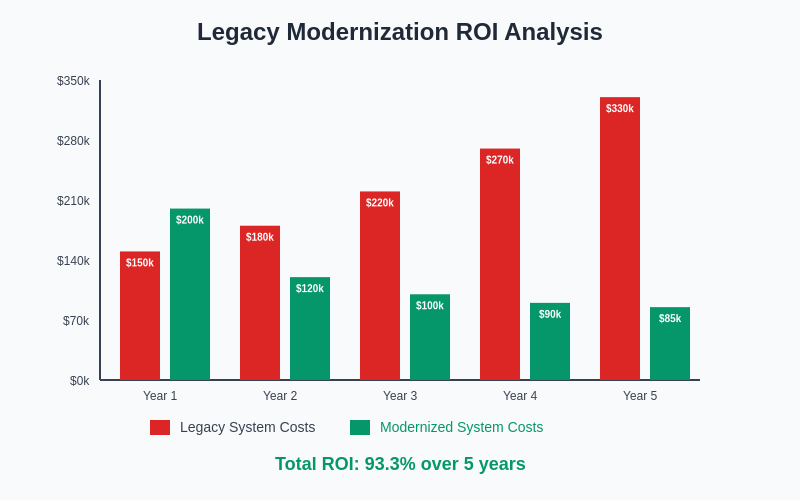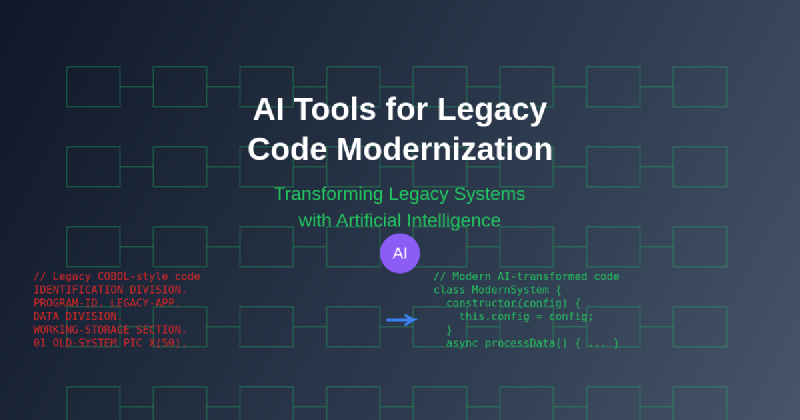The challenge of modernizing legacy code represents one of the most persistent and complex problems in software engineering, with organizations worldwide struggling to maintain aging systems while simultaneously driving innovation and technological advancement. Traditional approaches to legacy code modernization have long been characterized by extensive manual effort, significant risk, and prohibitive costs that often delay or prevent necessary updates. However, the emergence of sophisticated artificial intelligence tools has fundamentally transformed this landscape, offering unprecedented capabilities for automated code analysis, intelligent refactoring, and systematic modernization of even the most complex legacy systems.
Stay updated with the latest AI development trends that are revolutionizing how organizations approach legacy system modernization and technical debt reduction. The integration of AI into legacy code modernization workflows represents a paradigm shift that enables organizations to tackle previously insurmountable technical challenges while maintaining system stability and business continuity throughout the transformation process.
Understanding the Legacy Code Challenge
Legacy codebases present unique challenges that have traditionally required specialized expertise, extensive documentation, and careful planning to address effectively. These systems often contain decades of accumulated technical debt, undocumented business logic, and dependencies on outdated technologies that may no longer be supported or understood by current development teams. The complexity of these systems is further compounded by the fact that they frequently serve as critical components of business operations, making any modification attempts inherently risky and requiring extensive testing and validation.
The traditional approach to legacy modernization involves comprehensive code audits, manual refactoring efforts, and gradual migration strategies that can span months or years to complete. This process demands significant resources and specialized knowledge while presenting substantial risks to business continuity and system stability. The introduction of AI tools has fundamentally altered this equation by providing automated capabilities for code analysis, pattern recognition, and intelligent transformation that dramatically reduce both the time and risk associated with legacy modernization efforts.
Modern AI-powered modernization tools leverage machine learning algorithms trained on vast repositories of code to understand programming patterns, identify potential issues, and suggest optimal modernization strategies. These tools can analyze legacy codebases written in virtually any programming language, identify architectural patterns, detect security vulnerabilities, and recommend specific modernization approaches tailored to the unique characteristics and requirements of each system.
AI-Powered Code Analysis and Assessment
The foundation of successful legacy modernization lies in comprehensive understanding of existing systems, and AI tools have revolutionized the speed and accuracy with which organizations can assess their legacy codebases. Advanced static analysis engines powered by machine learning can parse through millions of lines of code in minutes, identifying architectural patterns, dependencies, potential vulnerabilities, and modernization opportunities that would take human analysts weeks or months to discover through manual review.
These AI-driven assessment tools provide detailed insights into code quality metrics, technical debt accumulation, and maintenance costs while generating comprehensive reports that help organizations prioritize modernization efforts based on business impact and technical feasibility. The ability to automatically identify code smells, anti-patterns, and architectural violations enables development teams to focus their efforts on the most critical areas requiring attention while building confidence in the overall modernization strategy.
Leverage advanced AI capabilities with Claude for comprehensive code analysis and modernization planning that takes into account both technical complexity and business requirements. The sophisticated reasoning capabilities of modern AI systems enable nuanced analysis of legacy systems that goes beyond simple pattern matching to understand the intent and purpose of existing code structures.
Automated Refactoring and Code Transformation
One of the most significant contributions of AI to legacy modernization lies in automated refactoring capabilities that can intelligently transform code while preserving existing functionality and business logic. Advanced AI refactoring tools can identify opportunities for code simplification, eliminate redundant patterns, modernize deprecated APIs, and restructure complex methods into more maintainable components without requiring extensive manual intervention or risking the introduction of functional regressions.
These tools employ sophisticated algorithms that understand the semantic meaning of code constructs, enabling them to perform complex transformations that go beyond simple find-and-replace operations. The AI can recognize when specific patterns should be replaced with modern equivalents, identify opportunities for design pattern implementation, and suggest architectural improvements that enhance code maintainability and performance while preserving the original system’s behavior and requirements.
The automation of refactoring processes has dramatically reduced the time and cost associated with legacy modernization while improving the consistency and reliability of transformation results. Organizations can now apply comprehensive refactoring to large codebases with confidence, knowing that AI tools will maintain functional equivalence while modernizing code structures and improving overall system architecture.
Language Migration and Platform Modernization
Perhaps one of the most challenging aspects of legacy modernization involves migrating systems from obsolete programming languages or platforms to modern alternatives, a process that has traditionally required complete system rewrites and extensive testing efforts. AI tools have introduced revolutionary capabilities for automated language translation and platform migration that can convert entire applications from legacy languages like COBOL, Fortran, or Visual Basic to modern languages such as Java, Python, or C# while maintaining functional equivalence and business logic integrity.
These AI-powered migration tools understand the nuances of different programming languages, including language-specific idioms, data structures, and control flow patterns, enabling them to generate equivalent implementations in target languages that preserve the original system’s behavior and performance characteristics. The ability to automatically handle complex language-specific constructs such as memory management, error handling, and concurrency patterns has made previously impossible migration projects feasible and cost-effective.
The success of AI-driven language migration extends beyond simple syntax translation to include intelligent adaptation of architectural patterns, modernization of data access approaches, and integration of contemporary security practices that ensure migrated systems meet current standards for performance, security, and maintainability.
Intelligent Dependency Management and Library Modernization
Legacy systems often rely on outdated libraries, frameworks, and dependencies that may no longer be maintained or may contain known security vulnerabilities, creating significant challenges for modernization efforts. AI tools have emerged as powerful allies in identifying, analyzing, and modernizing these dependencies through intelligent recommendation systems that can suggest modern alternatives while ensuring compatibility and functional equivalence.
Advanced dependency analysis tools powered by machine learning can map complex dependency graphs, identify potential conflicts, and recommend upgrade paths that minimize risk while maximizing the benefits of modernization. These tools understand the relationships between different libraries and frameworks, enabling them to suggest combinations of modern dependencies that work together effectively while providing equivalent or enhanced functionality compared to legacy alternatives.
The automation of dependency modernization has eliminated one of the most time-consuming and error-prone aspects of legacy system updates, enabling organizations to maintain current and secure dependency stacks without the extensive research and testing that was previously required to validate compatibility and functionality across complex systems.

The systematic approach to legacy modernization enabled by AI tools creates a structured pathway from initial assessment through complete transformation, ensuring that each phase builds upon the previous while maintaining system integrity and business continuity throughout the process.
Security Vulnerability Detection and Remediation
Security considerations represent a critical aspect of legacy modernization, as older systems often contain vulnerabilities that were not recognized or understood when the code was originally written. AI-powered security analysis tools can scan legacy codebases to identify potential security issues, including SQL injection vulnerabilities, cross-site scripting risks, buffer overflow conditions, and inadequate input validation that may expose systems to modern attack vectors.
These tools leverage extensive databases of known vulnerability patterns and security best practices to provide comprehensive security assessments that go beyond simple pattern matching to understand the context and implications of potential security issues. The AI can suggest specific remediation strategies, recommend secure coding alternatives, and even generate patches that address identified vulnerabilities while maintaining system functionality.
The integration of security analysis into the modernization workflow ensures that updated systems not only benefit from modern development practices but also incorporate contemporary security standards that protect against current and emerging threats. This proactive approach to security modernization helps organizations avoid the costly and disruptive security incidents that can result from deploying modernized systems that retain legacy security weaknesses.
Performance Optimization and Architectural Improvements
Legacy systems often suffer from performance bottlenecks and architectural limitations that were acceptable when the systems were first developed but that no longer meet current performance expectations or scalability requirements. AI tools can analyze system performance patterns, identify bottlenecks, and recommend architectural improvements that enhance system performance while maintaining functional compatibility with existing business processes.
Advanced performance analysis capabilities enable AI tools to understand the relationships between code structure, data access patterns, and system performance, allowing them to suggest specific optimizations that can dramatically improve system responsiveness and scalability. These recommendations may include database query optimization, caching strategy implementation, algorithm modernization, and architectural pattern updates that leverage contemporary development practices.
Explore comprehensive AI research capabilities with Perplexity to stay informed about the latest developments in performance optimization techniques and architectural modernization strategies that can enhance your legacy system transformation efforts.
Documentation Generation and Knowledge Transfer
One of the most significant challenges in legacy modernization involves understanding and documenting existing system functionality, particularly when original development teams are no longer available and system documentation is incomplete or outdated. AI tools have revolutionized this aspect of modernization by providing automated documentation generation capabilities that can analyze code structure and generate comprehensive documentation describing system functionality, data flows, and business logic implementation.
These AI-powered documentation tools can reverse-engineer system architecture, identify key business processes, and generate detailed explanations of complex algorithms and data transformations that would require extensive manual analysis to understand and document. The ability to automatically generate API documentation, system integration guides, and operational procedures ensures that modernized systems are accompanied by comprehensive documentation that facilitates ongoing maintenance and future development efforts.
The automation of knowledge transfer processes has made it possible for organizations to capture and preserve critical system knowledge that might otherwise be lost during modernization efforts, ensuring that institutional knowledge is maintained and made available to current and future development teams.
Testing and Validation Automation
Ensuring functional equivalence between legacy and modernized systems represents one of the most critical aspects of successful modernization efforts, requiring comprehensive testing strategies that validate system behavior across all possible scenarios and use cases. AI tools have transformed testing and validation processes by providing automated test generation capabilities that can create comprehensive test suites based on analysis of existing system behavior and business logic implementation.
Advanced AI testing tools can analyze legacy systems to understand expected behaviors, generate test cases that cover edge conditions and error scenarios, and create automated validation frameworks that ensure modernized systems maintain functional compatibility with original implementations. These tools can also identify areas where testing coverage may be insufficient and suggest additional test scenarios that should be validated to ensure comprehensive system verification.
The automation of testing and validation processes has dramatically reduced the time and effort required to verify modernization success while improving the reliability and completeness of validation efforts. Organizations can now approach legacy modernization with greater confidence, knowing that comprehensive automated testing will identify any functional discrepancies before modernized systems are deployed to production environments.
Cloud Migration and Infrastructure Modernization
Modern legacy modernization efforts often involve migration from on-premises infrastructure to cloud-based platforms, introducing additional complexity related to infrastructure adaptation, service integration, and deployment automation. AI tools have emerged as valuable allies in cloud migration planning by analyzing existing infrastructure requirements, recommending optimal cloud service configurations, and automating the adaptation of applications for cloud deployment.
These tools can assess current infrastructure utilization patterns, identify opportunities for cost optimization through cloud service selection, and recommend architectural modifications that leverage cloud-native capabilities such as auto-scaling, load balancing, and distributed computing. The ability to automatically generate infrastructure-as-code configurations and deployment automation scripts has streamlined cloud migration processes while ensuring that migrated systems take full advantage of cloud platform capabilities.
The integration of infrastructure modernization with application modernization has enabled organizations to achieve comprehensive system transformation that addresses both application-level technical debt and infrastructure-related limitations that may constrain system performance and scalability.

The transformation from monolithic legacy architectures to modern, cloud-native designs represents a fundamental shift in system capabilities, scalability, and maintenance requirements that AI tools help organizations navigate successfully while minimizing disruption to business operations.
Cost-Benefit Analysis and ROI Optimization
Legacy modernization represents a significant investment that requires careful planning and justification based on quantifiable benefits and return on investment considerations. AI tools have enhanced the ability of organizations to perform accurate cost-benefit analysis by providing detailed assessments of modernization effort requirements, potential cost savings, and performance improvements that can be achieved through systematic modernization efforts.
Advanced analysis capabilities enable AI tools to estimate the effort required for different modernization approaches, predict the long-term maintenance cost reductions that can be achieved through technical debt elimination, and quantify the business benefits that result from improved system performance and reliability. These insights enable organizations to make informed decisions about modernization priorities and resource allocation while building compelling business cases for modernization investments.
The ability to demonstrate clear return on investment has made it easier for organizations to secure funding and executive support for comprehensive modernization efforts while ensuring that modernization strategies align with business objectives and deliver measurable value to the organization.
Integration with Modern Development Practices
Successful legacy modernization extends beyond code transformation to include integration with contemporary development practices such as continuous integration, automated deployment, and DevOps methodologies that enable ongoing system evolution and maintenance. AI tools can analyze existing development workflows and recommend strategies for integrating modernized systems with current development practices while identifying opportunities for process automation and improvement.
These tools can generate continuous integration configurations, recommend testing automation strategies, and suggest monitoring and observability implementations that ensure modernized systems can be effectively maintained and evolved using current development practices. The ability to automatically adapt legacy systems for modern development workflows has eliminated many of the operational challenges that previously complicated legacy modernization efforts.
The integration of modernized systems with contemporary development practices ensures that organizations realize the full benefits of modernization efforts while building sustainable development processes that support ongoing system evolution and improvement.
Future Trends and Emerging Technologies
The field of AI-powered legacy modernization continues to evolve rapidly, with emerging technologies and methodologies promising even more sophisticated capabilities for automated system transformation and modernization. Advanced machine learning techniques, including large language models specifically trained on code repositories, are enabling more nuanced understanding of system functionality and more intelligent transformation recommendations that consider both technical and business requirements.
The integration of AI modernization tools with emerging technologies such as containerization, microservices architectures, and serverless computing platforms is creating new opportunities for comprehensive system transformation that goes beyond simple code updates to include fundamental architectural modernization. These developments promise to make legacy modernization more accessible, cost-effective, and comprehensive while reducing the risks and uncertainties traditionally associated with large-scale system transformation efforts.

The financial benefits of AI-powered legacy modernization become increasingly apparent over time, with organizations typically seeing substantial cost reductions and improved operational efficiency within the first few years of implementation. The return on investment demonstrates the compelling business case for systematic modernization approaches.
The continued advancement of AI capabilities in code analysis, transformation, and validation suggests that legacy modernization will become increasingly automated and reliable, enabling organizations to address technical debt more proactively and maintain system currency more effectively than ever before.
Strategic Implementation Considerations
Organizations considering AI-powered legacy modernization must carefully evaluate their specific requirements, constraints, and objectives to develop effective modernization strategies that leverage AI capabilities while addressing unique organizational needs and priorities. The selection of appropriate AI tools and methodologies requires consideration of factors such as system complexity, technology stacks, integration requirements, and organizational capabilities that influence the success of modernization efforts.
Effective implementation of AI-powered modernization requires careful planning, stakeholder alignment, and risk management strategies that ensure modernization efforts deliver intended benefits while minimizing disruption to business operations. Organizations must also consider the long-term implications of modernization decisions, including ongoing maintenance requirements, skill development needs, and technology evolution trends that may influence future system requirements.
The development of comprehensive modernization strategies that integrate AI capabilities with organizational processes and objectives represents a critical success factor that determines whether modernization efforts achieve their intended goals and deliver sustainable value to the organization.
Disclaimer
This article is for informational purposes only and does not constitute professional advice. The views expressed are based on current understanding of AI technologies and their applications in legacy code modernization. Readers should conduct their own research and consider their specific requirements when implementing AI-powered modernization tools. The effectiveness of AI assistance may vary depending on specific use cases, system complexity, and organizational requirements. Organizations should carefully evaluate potential tools and approaches before committing to comprehensive modernization efforts.
